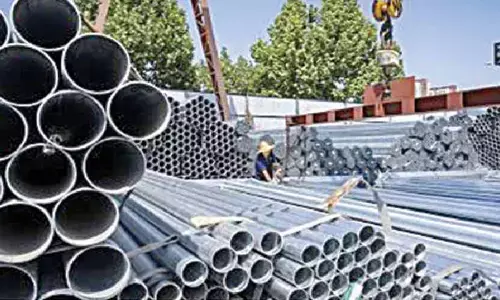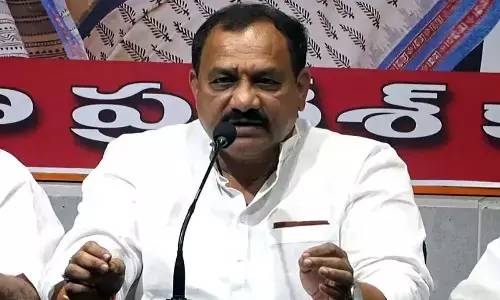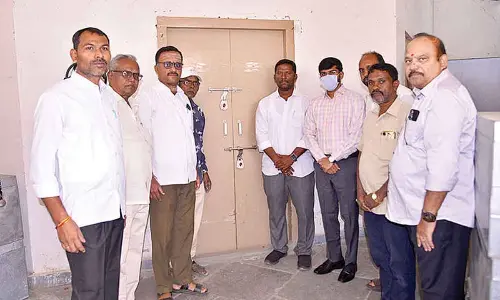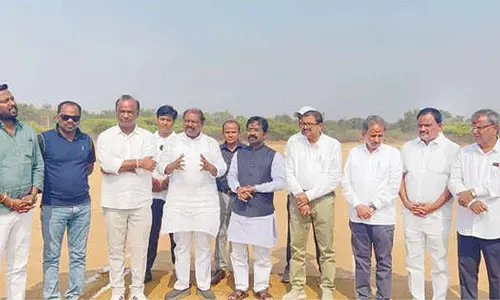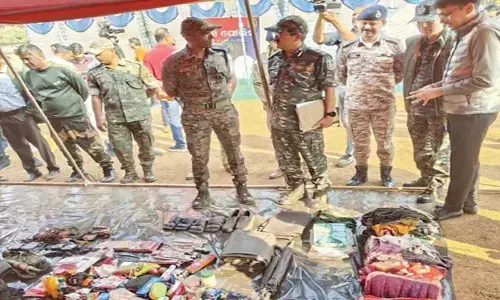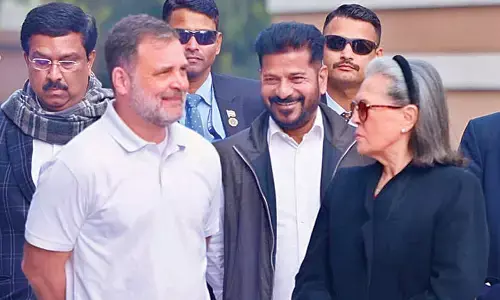Comprehending the economic aspects Part - I

In the study of economy, it is extremely important to be well informed about the factors in the External Sector which influence the working of various other aspects of the economy.
In the study of economy, it is extremely important to be well informed about the factors in the External Sector which influence the working of various other aspects of the economy.
The International Monetary Fund (IMF) revises the global growth outlook in its World Economic Outlook (WEO) four times a year.
Salient Features of the FTP 2015-2020:
Merchandise Export from India Scheme: The six different schemes of the earlier FTP (Focus Product Scheme, Market Linked Focus Product Scheme, Focus Market Scheme, Agriculture Infrastructure Incentive Scrip, Vishesh Krishi and Gram Udyog Yojana and Incremental Export Incentive Scheme)
which had varying sector-specific or actual user only conditions attached to their use have been merged into a single scheme, namely the Merchandise Export from India Scheme (MEIS). Notified goods exported to notified markets will be incentivized on realized FOB value of exports.
Countries have been grouped into three categories--namely Category A: traditional markets, Category B: emerging & focus markets and Category C: other markets--for grant of incentives. The government has expanded the coverage of the MEIS on 29 October 2015 by adding 110 new items. The incentive rate/country coverage of 2228 items has been enhanced.
Service Export from India Scheme: The Served from India Scheme (SFIS) has been replaced with the Service Export from India Scheme (SEIS). The SEIS applies to ‘service providers located in India’ instead of ‘Indian service providers’. Thus it provides for incentives to all service providers of notified services who are providing services from India, regardless of the constitution or profile of the service provider.
The rates of incentivization under the SEIS are based on net foreign exchange earned. The incentive issued as duty credit scrip, will no longer carry an actual user condition and will no longer be restricted to usage for specified types of goods but be freely transferable and usable for all types of goods and service tax debits on procurement of services/goods.
Incentives (MEIS & SEIS) to be available for SEZs: FTP 2015-20 extends the benefits of the MEIS and SEIS to special economic zones (SEZ) as well, which will give a new impetus to the development and growth of SEZs.
Duty credit scrips are freely transferable and usable for payment of custom duty, excise duty and service tax: All scrips issued under the MEIS and SEIS and the goods imported against these scrips are fully transferable. Scrips issued under these schemes can be used for the following:
(a) Payment of customs duty on import of inputs / goods including capital goods, except items listed in Appendix 3A.
(b) Payment of excise duty on domestic procurement of inputs or goods, including capital goods as per notification of Department of Revenue (DoR).
(c) Payment of service tax on procurement of services as per DoR notification. Basic customs duty paid in cash or through debit under duty credit scrip can be taken back as duty drawback as per DoR rules, if inputs so imported are used for exports.
Other measures:
(a) Under the Export Promotion Capital Goods (EPCG) scheme, in case capital goods are procured from indigenous manufacturers, specific export obligation has been reduced to 75 per cent. This is designed to help the indigenous capital goods manufacturing industry.
(b) Under the MEIS, export items with high domestic content and value addition have generally been provided higher levels of incentives.
(c) Hard copies of applications and specified documents which were required to be submitted earlier for incentive schemes and duty exemption schemes have now been dispensed with.
(d) Landing documents of export consignments as proof for notified market can now be digitally uploaded as specified.
(e) There will be no need to submit copies of permanent records/documents repeatedly with each application, once the same are uploaded in the exporter/importer profile.
(f) Dedicated e-mail addresses have been provided for faster and paperless communication with various committees of the Directorate General of Foreign Trade (DGFT), e.g. Norms Committee and Exim Facilitation Committee.
Prices, Agriculture and Food Management:
Direct Benefit Transfer (DBT) of Hybrid Seeds in Uttar Pradesh:
The Pardarshi Kisan Sewa Yojana (PKSY) was launched in September, 2014 and rolled out in April 2015 in Uttar Pradesh for distribution of hybrid seeds through DBT (Direct Benefit Transfer). The aim of the scheme was to target the intended beneficiaries and prevent diversion of subsidized seeds, corruption and manipulation.
The Cotton Seeds Price (Control) Order, 2015:
The Government decided to fix the maximum sale price of cotton seeds through the Cotton Seeds Price (Control) Order. The ‘maximum sale price’ is the maximum price inclusive of seed value, licence fee, trade margin and local taxes or duties, at which cotton seeds or transgenic varieties of cotton seeds are sold to farmers.
The order also states that any person who contravenes any of the provisions of this order or fails to carry out any direction or requisition made there under, shall be punishable under section 7 of the Act. The Maximum Sale Price of cotton seeds on or before 31 March of every year, applicable for the next financial year.
It has also decided to fix and regulate the seed value and licensee fee including royalty or trait value, through a notification issued by the Ministry of Agriculture.
Mission for Integrated Development of Horticulture:
The Mission for Integrated Development of Horticulture (MIDH), was launched during the Twelfth Plan with effect from 2014-15, for the holistic development of the horticulture sector covering fruits, vegetables, mushrooms, spices, flowers, aromatic plants, coconut, cashew, cocoa and bamboo.
The MIDH subsumes the National Horticulture Mission (NHM), the Horticulture Mission for North East & Himalayan States (HMNEH), the National Bamboo Mission (NBM), the National Horticulture Board (NHB), the Coconut Development Board (CDB) and the Central Institute for Horticulture (CIH), Nagaland.
The Government of India (GOI) contributes 85 per cent of the total outlay for developmental programmes in all the states. From 2015-16, the pattern of assistance is 60:40 between the Government of India and NHM states and 90:10 for HMNEH states.
Entitled programs for undernourished:
A large number of people who remain undernourished. There is entitlement feeding programmes like the Integrated Child Development Scheme (ICDS) (All Children under six, pregnant and lactating mothers) and MDMS (Mid Day Meal Schemes), food subsidy programmes like the Targeted Public Distribution System, Annapurna (10 kgs of free food grain for destitute poor) and the Employment Programmes like Mahatma Gandhi National Rural Employment Guarantee Scheme (100 days of employment at minimum wages) to ensure food security.
Agri-Marketing Reforms:
A National Agriculture Market (NAM) through an Agri-Tech Infrastructure Fund (ATIF) was approved by the Cabinet Committee on Economic Affairs (CCEA) on 1 July 2015 with a budget of R200 crore. The revised scheme envisages implementation of NAM by setting up of an appropriate common e-market platform that would be deployable in selected regulated wholesale markets in States/Union Territories (UT) desirous of joining the e-platform.
The Small Farmers Agribusiness Consortium (SFAC) will implement the national e-platform and will cover 250, 200 and 135 mandis during 2015-16, 2016-17 and 2017-18 respectively.
The Department of Agriculture, Cooperation & Farmers Welfare (DAC&FW) will meet expenses on software and its customization for the States and provide it free of cost to the States and UTs. Integration of state Agricultural Produce Market Committees (APMC) with NAM requires certain pre-requisites in the State AMPC Acts, namely- (i) a single license to be valid across the State, (ii) single point levy of market fee and (iii) provision for electronic auction as a mode for price discovery. Only those States/UTs that have completed these three pre-requisites will be eligible for assistance under the scheme.
Industrial, Corporate, and Infrastructure Performance:
The investment limit requiring prior permission from the Foreign Investment Promotion Board (FIPB)/Cabinet Committee on Economic Affairs has been increased from R1200cr to R3000cr.
The National Investment and Infrastructure Fund (NIIF) has been approved to extend equity support to infrastructure Non-Bank Financial Companies (NBFC). Issue of tax-free infrastructure bonds has been allowed for rail, roads and irrigation programmes.
Micro, Small and Medium Enterprises Sector:
Udyog Aadhar Memorandum (UAM): The UAM scheme, which was notified in September 2015 under section 8 of the MSME Development Act 2006. Under the scheme, MSME entrepreneurs just need to file an online entrepreneurs’ memorandum to instantly get a unique Udyog Aadhaar Number (UAN).
Framework for Revival and Rehabilitation of MSMEs: Under this framework, banks have to constitute a Committee for Distressed MSME enterprises at zonal or district level to prepare a Corrective Action Plan (CAP) for these units.
A scheme for Promoting Innovation and Rural Entrepreneurs (ASPIRE): ASPIRE was launched on March 16, 2015 with the objective of setting up a network of technology centres and incubation centres to accelerate entrepreneurship and promote start-ups for innovation and entrepreneurship in rural and agriculture based industry.
In the World Bank’s Ease of Doing Business report 2016, India’s position has improved to 130 in 2016 from 134 in 2015.
By: Balalatha Mallavarapu








